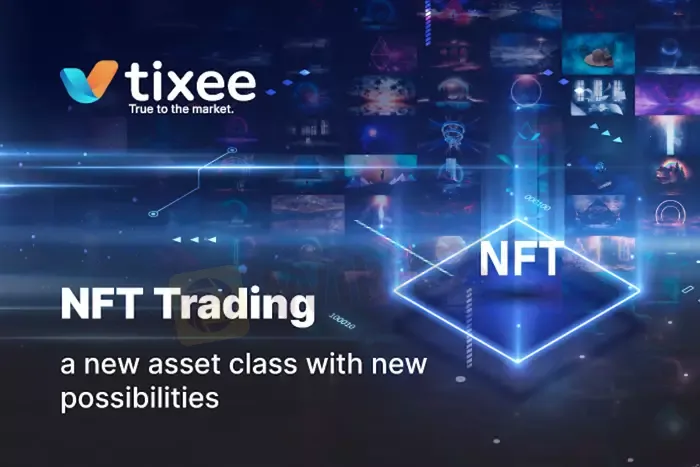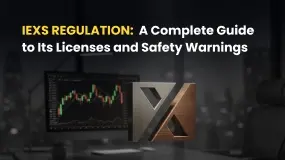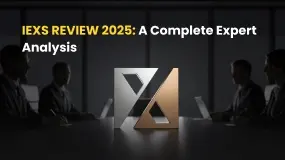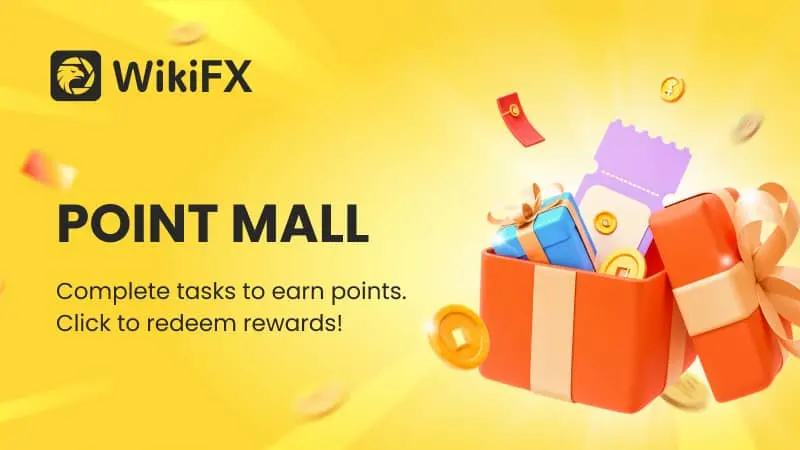简体中文
繁體中文
English
Pусский
日本語
ภาษาไทย
Tiếng Việt
Bahasa Indonesia
Español
हिन्दी
Filippiiniläinen
Français
Deutsch
Português
Türkçe
한국어
العربية
NFT Trading – A New Asset Class With New Possibilities
Abstract:NFTs are the newest asset class; many traders and investors alike are keen to learn about NFT trading and how they can get started.

Anyone with even a mild interest in the financial markets has likely heard of non-fungible tokens, better known as NFTs. The concept of an asset being non-fungible is unusual for traders of traditional financial instruments such as forex, stocks, currencies, commodities or oil – all of which are fungible.
The difference between fungible and non-fungible assets
A fungible asset is one where its units are interchangeable. For example, one US dollar is worth the same as any other US dollar; one AAPL share is worth the same as any other AAPL share, and one ounce of gold is worth the same as any other ounce of gold.
In contrast, a non-fungible asset is one that isnt interchangeable. For example, while both are paintings worth hundreds of millions of dollars, The Scream by Edvard Munch is not worth the same as the Mona Lisa by Leonardo da Vinci; they are not interchangeable. One-of-a-kind pieces of art are often used to describe the concept of NFTs, but there is one notable difference – NFTs are intangible, meaning they do not have a physical form and cannot be held or touched.
Another aspect that makes NFTs somewhat confusing is that they are digital, making them easy to replicate simply by using the copy-paste function on a computer. In contrast, copying the Mona Lisa takes some real skill and effort. However, the authenticity of genuine NFTs is easily verifiable on a public blockchain, whereas most people reading this article probably wouldnt be able to tell the difference between an original and a copied piece of art.
What is an NFT?
NFTs are the latest trend to emerge in the world of decentralised finance, and the newest digital asset many traders are speculating on. An NFT represents a rare or unique digital item, such as artworks, animations, avatars, videos or music. As weve already covered, while NFTs are intangible, authenticity and ownership are verifiable on blockchains.
NFTs exist on blockchains such as Ethereum, EOS and Solana. Their characteristics are defined in smart contracts visible on the blockchain explorer and accessed via compatible crypto wallets. The blockchain maintains public records of the NFT creator, creation date and ownership history.
Some of the best-known NFTs are avatars like Cryptopunks, The Bored Ape Yacht Club and Cool Cats collections and Twitter founder Jack Dorseys first-ever Tweet. NFTs have also made their way into virtual worlds (known as the metaverse) like Decentraland, SandBox and Axie Infinity, where users can own virtual land and possessions.
How is the price of an NFT determined?
The first principle to know before starting NFT trading is to understand how prices are determined. Like any asset, NFT prices are governed by the laws of supply and demand. The structure of the NFT market is similar to the $1.7 trillion art investment world, rather than traditional financial markets.
Art is arguably the least liquid market in the world. Often there is just one of each piece, and collections are limited, meaning the supply is always low. Therefore, if the demand is high, prices can reach eye-watering levels.
The most expensive NFT sold is the “Everydays: The First 5000 Days” by artist Mike Winkelmann, also known as Beeple. This NFT sold for US$69.3 million at Christie‘s auction house in 2021. But not every NFT will be worth tens of millions of dollars or even preserve their value. For example, Jack Dorsey’s tweet that was sold for $2.9 million in 2021 was recently listed for auction for $48 million, yet the highest bid was a mere $280.
In most cases, scarcity, utility and emotional value drive the demand for certain NFTS. As trends and interests change over time, the perceived value of rare artworks will shift too.
How to trade NFTs
There are several reputable marketplaces for buying and selling NFTs. Popular NFT trading marketplaces include OpenSea, X2Y2 and Magic Eden; these platforms let users buy and sell NFTs from their crypto wallets. However, NFT trading works more like an auction house rather than the financial markets.
In the marketplace, buyers bid on listings similar to auction sites like eBay. Each bidder competing to buy a particular NFT determines the values with their bid. The seller may set a reserve price to prevent the asset from being sold too cheap. Once the auction is concluded, the investor with the highest bid becomes the new owner, and the crypto is transferred from escrow to the seller, thus completing the deal.
Trading NFTs is a long-term strategy as it will likely require you to buy and hold your assets for months and possibly even years.
How someone can profit from the NFT trend
The first generation of NFTs was created in 2015 using smart contracts on the Ethereum blockchain. Since then, dozens of blockchains have begun supporting NFTs. Popular blockchains for minting NFTs are Solana, EOS, TRON, WAX, Binance Smart Chain and Ethereum.
Each blockchain that supports NFTs has a native token, which is required for minting, buying and transferring NFTs. Understanding the fundamentals of the NFT market could be extremely helpful when trading cryptocurrencies. NFT users need the native tokens of the blockchain theyre using to mint, transfer and buy NFTs, influencing the demand for those tokens.
Essentially, NFT trading can become a new economic indicator for gauging the fundamentals of the cryptocurrency markets.
Where to trade cryptocurrencies
There are dozens of well-known cryptocurrency exchanges, but they can be lacking in user experience. tixee is an award-winning and globally regulated forex and CFD broker offering leverage to go long or short on various cryptocurrencies, including popular cryptos used for NFT trading such as ETH, EOS, NEO and more.
Best of all, you can get exposure to the crypto markets without having to buy and deposit cryptocurrencies which, in the case of Bitcoin and Ethereum, can have high network fees. tixee lets you deposit for free using your credit or debit card, bank transfer and a list of local and alternative payment methods.

Disclaimer:
The views in this article only represent the author's personal views, and do not constitute investment advice on this platform. This platform does not guarantee the accuracy, completeness and timeliness of the information in the article, and will not be liable for any loss caused by the use of or reliance on the information in the article.
Read more

FONDEX Review: Do Traders Really Face Inflated Spreads & Withdrawal Issues?
Does FONDEX charge you spreads more than advertised to cause you trading losses? Does this situation exist even when opening a forex position? Do you witness customer support issues regarding deposits and withdrawals at FONDEX broker? Does the customer support official fail to explain to you the reason behind your fund loss? In this article, we have shared FONDEX trading complaints. Read on!

IEXS Regulation: A Complete Guide to Its Licenses and Safety Warnings
When choosing a broker, every trader's biggest concern is safety and trust: is it regulated? For IEXS, the answer isn't simply YES or NO. While the company says it's regulated by trusted authorities, looking closer shows a complicated and worrying situation with mixed evidence and serious risks. What they claim on the surface doesn't match up with official warnings, license problems, and many bad user experiences. This article gives you a detailed, fact-based look into IEXS regulations, breaking down their official licenses, what their trading platform is really like, and real stories from traders who have used it. Our goal is to give you the facts so you can make a smart decision about keeping your money safe.

IEXS Review 2025: A Complete Expert Analysis
Choosing the right forex broker requires careful research. IEXS, a broker that has been operating for 5-10 years, shows a mixed picture for traders. The company is based in the UK and claims to serve customers worldwide, offering many different trading options on the popular MT4 platform. However, when we look closely at its licenses and read what users say about it, we find serious problems that potential customers need to know about. This review gives you a complete analysis based on publicly available information, focusing on regulation, trading conditions, how well the platform works, and real experiences from users.

Announcement: Points Mall Now Online
Dear Users, Thank you for your continued support and companionship! To show our appreciation, we are excited to announce that our carefully designed Points Mall is officially online! Complete tasks to earn points and redeem them for great rewards!
WikiFX Broker
Latest News
The Debt-Reduction Playbook: Can Today's Governments Learn From The Past?
Trillium Financial Broker Exposed: Top Reasons Why Traders are Losing Trust Here
FIBO Group Ltd Review 2025: Find out whether FIBO Group Is Legit or Scam?
Amillex Withdrawal Problems
Is INGOT Brokers Safe or Scam? Critical 2025 Safety Review & Red Flags
150 Years Of Data Destroy Democrat Dogma On Tariffs: Fed Study Finds They Lower, Not Raise, Inflation
【WikiEXPO Global Expert Interviews】Ashish Kumar Singh: Building a Responsible and Interoperable Web3
Trump: India\s US exports jump despite 50% tariffs as trade tensions ease
CQG Partners with Webull Singapore to Power the Broker’s New Futures Trading Offering
IEXS Review 2025: A Complete Expert Analysis
Currency Calculator




